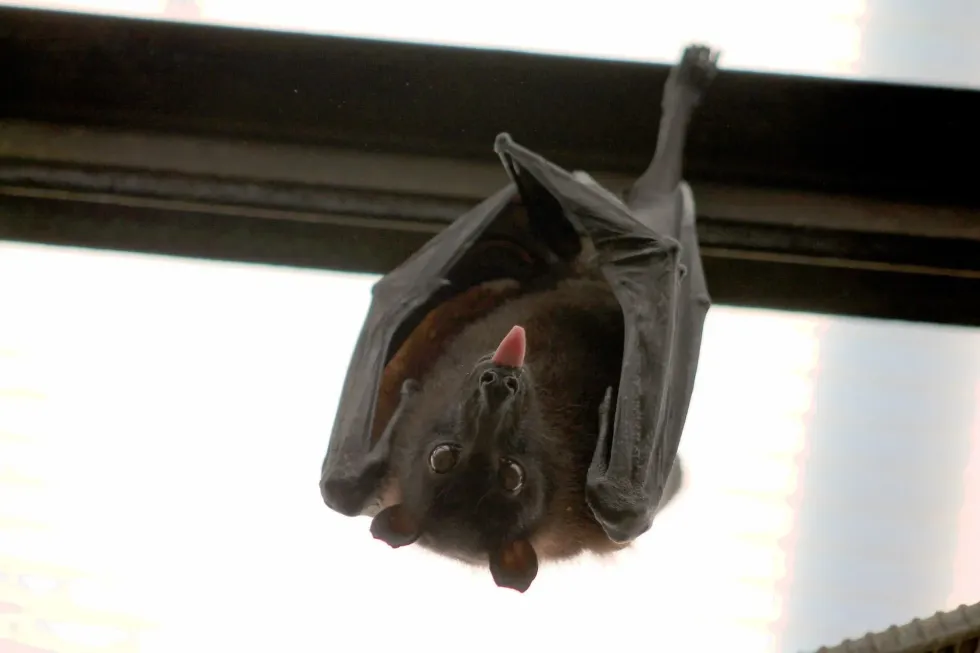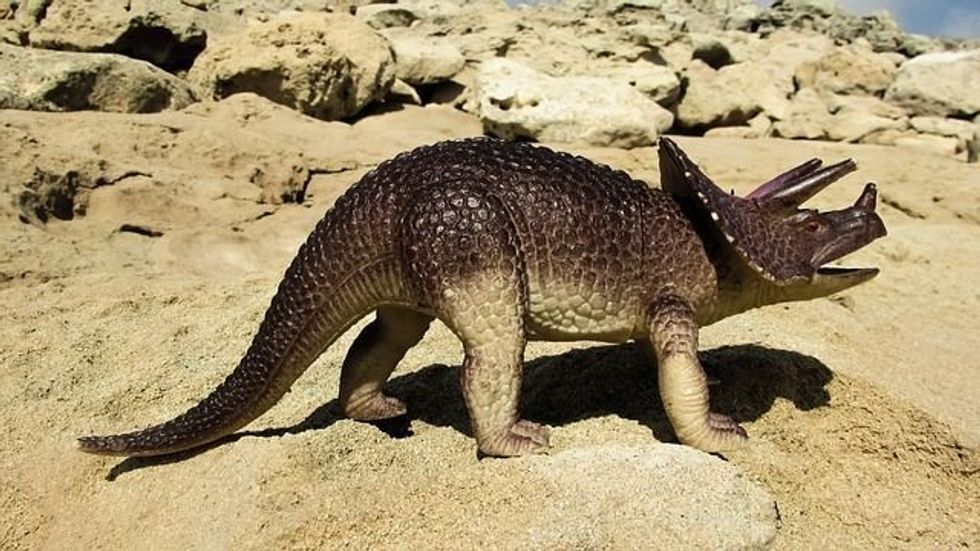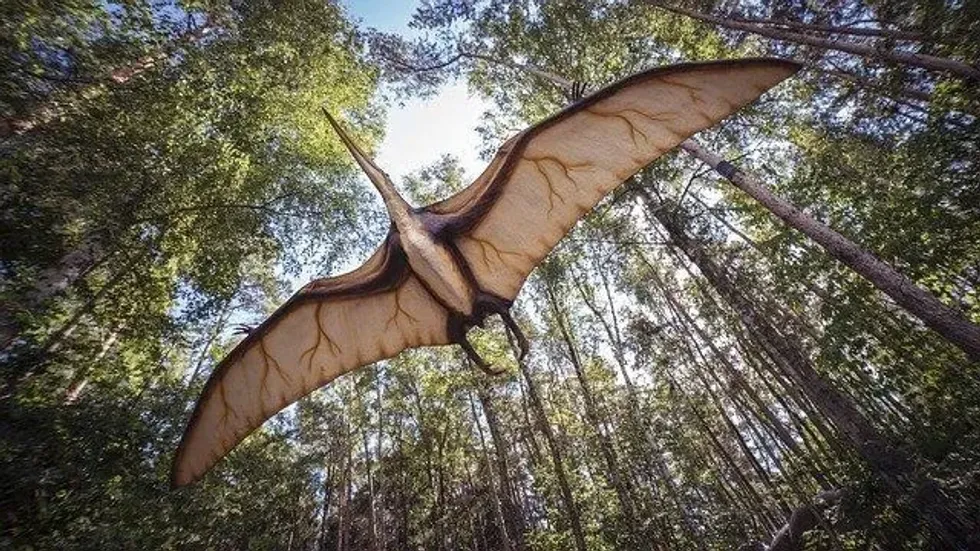The Bonin flying fox is a species group of megabats, or fruit bats, described by George Tradescant Lay, a British naturalist, in 1829. He named the species because of their unique feature, 'in the daytime, the habit of feeling rather than having its way'.
The type species name, Pselaphon, is a new Latin word taken from the ancient Greek word Psēlaphan which means to 'grope about'.
These flying foxes live in colonies during winter and also breed during the same time. These mammals are known to carry pups inside them for a long period of five to seven months.
This species lives in subtropical forests on steep hillsides. They are black and brown in color with fur on their bodies. These flying foxes are endemic to four islands of Japan.
The Bonin flying fox is listed among threatened species as Endangered by the IUCN. The species is in danger of becoming Vulnerable if conservation efforts aren't made. Habitat loss is the main reason for the species' status.
If you enjoy reading this article about the Bonin flying fox, then do read some interesting and fun facts about other species of flying fox, such as the Pemba flying fox and the Guam flying fox.
Bonin Flying Fox Interesting Facts
What type of animal is a Bonin flying fox?
The Bonin flying fox is a type of flying fox. The Bonin fruit bat is endemic to four islands of Japan. These Bonin flying foxes are bats that have recently gained attention due to their vulnerability and the ICUN has taken many steps in this regard.
The Bonin flying fox is also known as the Japanese Ogasawara giant bat. In Japanese, they are called ōkōmori. They are also referred to as fruit bats and megabats by scientists.
What class of animal does a Bonin flying fox belong to?
The kingdom, phylum, class, order, family a Bonin flying fox belongs to is Animalia, Chordata, Mammalia, Chiroptera, and Pteropodidae, respectively. These flying foxes are from the genus Pteropus, and ōkōmori is a species of the genus Pteropus pselaphon. The Rodrigues flying fox also belongs to the same family as this species.
How many Bonin flying foxes are there in the world?
The IUCN lists the Bonin fruit bat, Pteropus pselaphon, as an Endangered species on the threatened species list. According to data given by Wikipedia, the estimated population of the Bonin fruit bat, Pteropus pselaphon, is 130-140 in number.
Where does a Bonin flying fox live?
The Bonin flying fox or Bonin fruit bat has a very limited range and is endemic to four islands named Chichijima, Hahajima, north Iwo Jima, and south Iwo Jima. The Bonin flying fox range is Ogasawara Island, Japan.
What is a Bonin flying fox's habitat?
The Bonin flying fox (Bonin fruit bat) has a small habitat group and is found in subtropical forests. These bats can also be found in natural, steep hillsides. The natural habitat of this species of the order Chiroptera is being threatened as shown by the fact that their population is Endangered.
Who does the Bonin flying fox live with?
The Bonin flying fox, Pteropus pselaphon, lives in a group, forming colonies of around 80-100 in each group during the winter. The Pteropus pselaphon forms a group because they provide heat to one another. This species of flying fox bats lives in solitude during the summer.
How long does a Bonin flying fox live?
The Bonin flying fox is a bat species that can live up to the age of 16 years. This survival life expectancy is only when this Japanese Ogasawara giant bat is kept in captivity. When it is in the natural wild, its life expectancy is unknown.
How do they reproduce?
For the Bonin flying fox, Pteropus pselaphon, reproduction takes place during the winter. During the winter, this bat species forms colonies with a majority of females. This bat species is often heard screaming loudly while they mate.
The female carries the baby inside her body and, after a time period of five to seven months, the new pup is born at one time. In rare cases, two pups are born. The mother feeds the new pup until it grows into a young adult.
They reproduce once a year. Mostly, pups are seen in the month of August and from February to April. They also indulge in the social grooming of the group.
What is their conservation status?
The IUCN lists the Pteropus pselaphon species of Bonin flying fox as Endangered on the threatened species list. According to data provided by the IUCN, this species of bats has been affected largely due to habitat loss, which has caused a scarcity of food such as fruits and flowers.
Bonin Flying Fox Fun Facts
What do Bonin flying foxes look like?
The Pteropus pselaphon, ōkōmori, is a species of bats whose conservation status is listed as a threatened species and categorized as an Endangered species. The flying fox (Bonin flying fox) is like other flying foxes.
They are black and brown in color with silver hairs on the tip. The posterior portion of the flap in between hindlimbs is covered with fur on its dorsal side and half furred on its ventral side.
According to Wikipedia, the head, neck, and shoulders of this species of bats are covered with soft hair. They have small faces with scroll-like nostrils.
We've been unable to source an image of a Bonin flying fox and have used an image of a megabat instead. If you are able to provide us with a royalty-free image of a Bonin flying fox, we would be happy to credit you. Please contact us at hello@kidadl.com.
How cute are they?
The Pteropus pselaphon of the family Pteropodidae and the order Chiroptera are not cute at all. Though their small faces may appear attractive at first glance, they are not cute on those grounds alone because they may spread unknown deadly viruses.
How do they communicate?
The Ogasawara Islands' flying fox (Bonin fruit bat) of the order Chiroptera communicates through social grooming and loud screams. This means that these mammals from the Island of Chichijima use their vocals and tactile cues in order to communicate with each other.
How big is a Bonin flying fox?
The species group of the family Pteropodidae has a wingspan of 31 in (79 cm).
How fast can a Bonin flying fox fly?
The exact flying speed of this species in the order of Chiroptera is unknown.
How much does a Bonin flying fox weigh?
This Endangered species of bats weighs around 14–20.7 oz (403–587 g) as per data from Wikipedia.
What are the male and female names of the species?
Males and females do not have any specific names and are known by their general genus species name.
What would you call a baby Bonin flying fox?
Babies of these Endangered species are called pups.
What do they eat?
As per a summary of data collected, this Endangered species of the family Pteropodidae is herbivorous. Fruits such as apples, litchi, figs, mangoes, and various flowers are its food. Screw pines, guava fruits, and Agave americana are also included in the diet. The animal sucks the juice from these fruits and leaves the rest of the fiber behind.
Are they dangerous?
Though they directly cause no harm, in unknown ways they infect fruits and flowers which are further consumed by humans. Fruit sucked by this Endangered species of bats could later lead to the deadly spread of viruses among humans.
It would be prudent to stay away from this species of the order Chiroptera. Predators of this species are cats, owls, and humans.
Would they make a good pet?
No, they would not be an ideal pet. However, when kept in captivity, they can live for 16 years, and as the conservation status of this species is Endangered, it is recommended to leave them in their natural habitat.
Did you know...
This species of bats was listed as the Natural Monument of Japan in 1969. It is illegal to hunt this species.
If you want to repel these bats from your garden area, noise, smoke, and light are just temporary ways to repel them. Sustainable techniques include trimming trees and other food sources in your garden to avoid infestation.
You can also place predator decoys such as owls, keep shiny objects in trees, and try to make your garden area a distance from your house.
It is unknown whether this species is poisonous, but it can spread various viral diseases which megabats are known to spread. For example, they may spread diseases such as the Hendra virus or the Lyssavirus.
Why is the Bonin flying fox Endangered?
The Bonin flying fox is Endangered because of human activities such as agricultural nets, depredation of feral cats, and the loss of the flying fox's habitat. They are often kept in captivity with competition from invasive species such as rats and honey bees.
Why is it called a flying fox?
They are called flying foxes because they have a small face like a fox. They are also known as fruit bats and scientists even call them megabats.
Here at Kidadl, we have carefully created lots of interesting family-friendly animal facts for everyone to discover! Learn more about some other mammals from our English Foxhound fun facts or Lakeland Terrier interesting facts for kids.
You can even occupy yourself at home by coloring in one of our free printable Bonin flying fox coloring pages.








